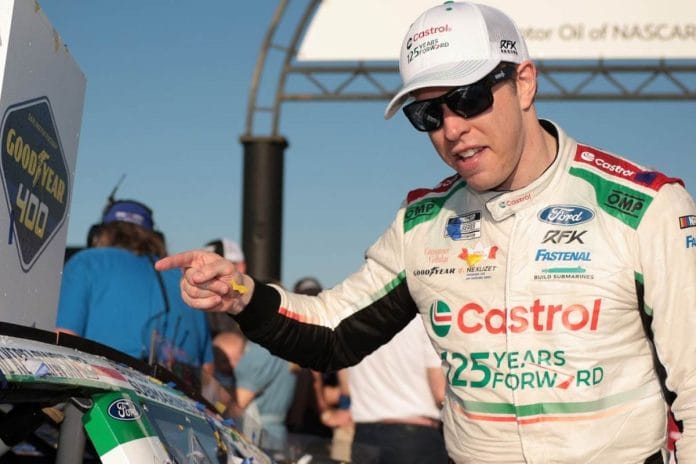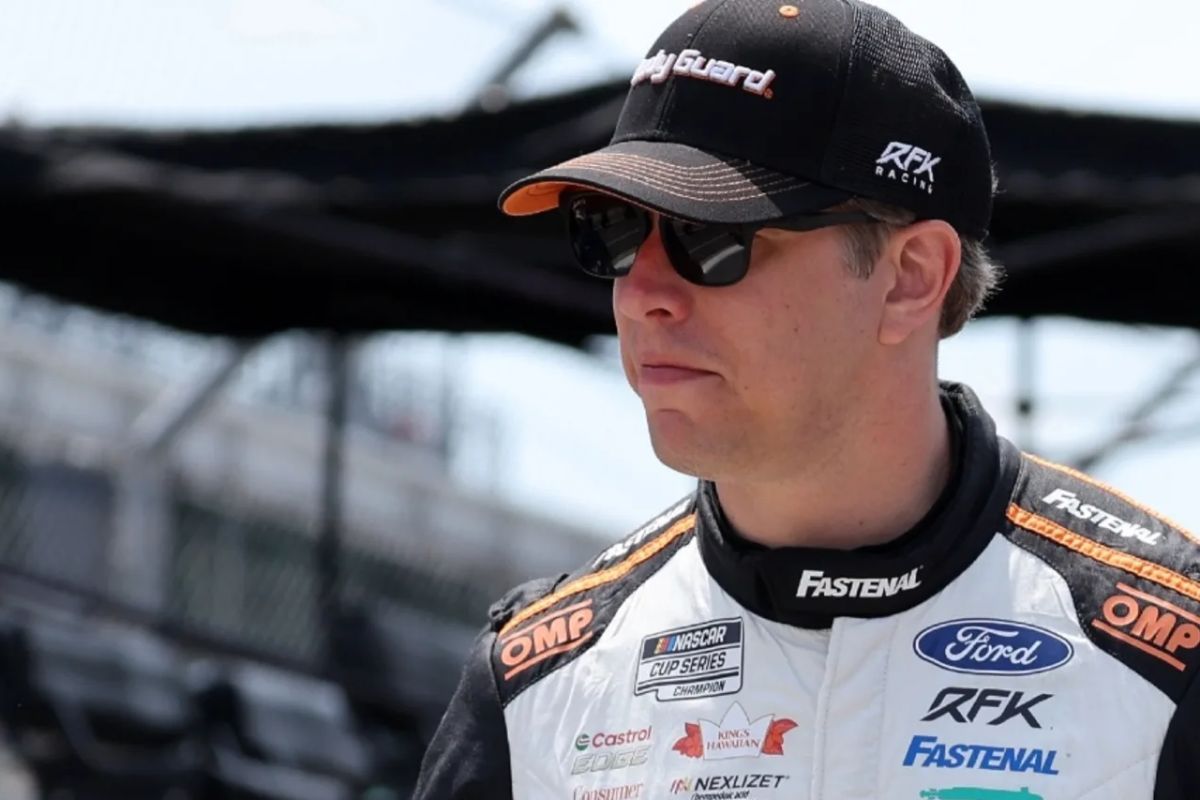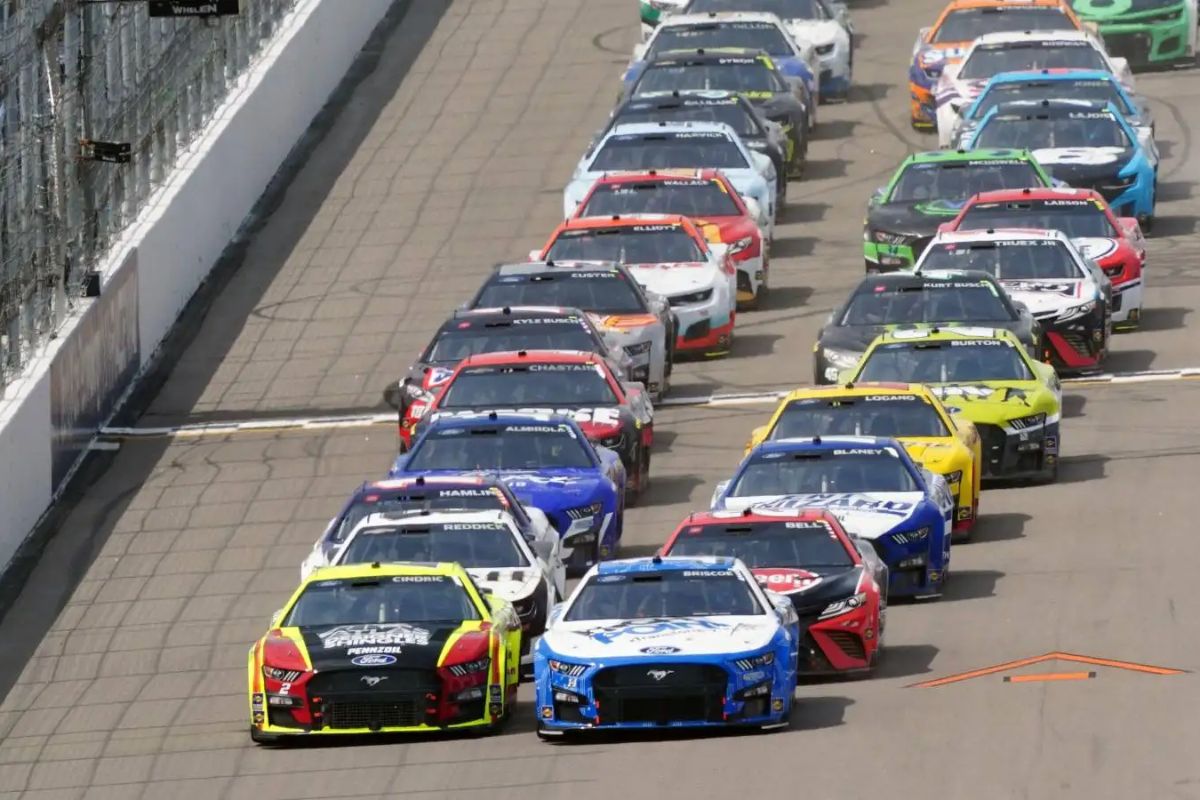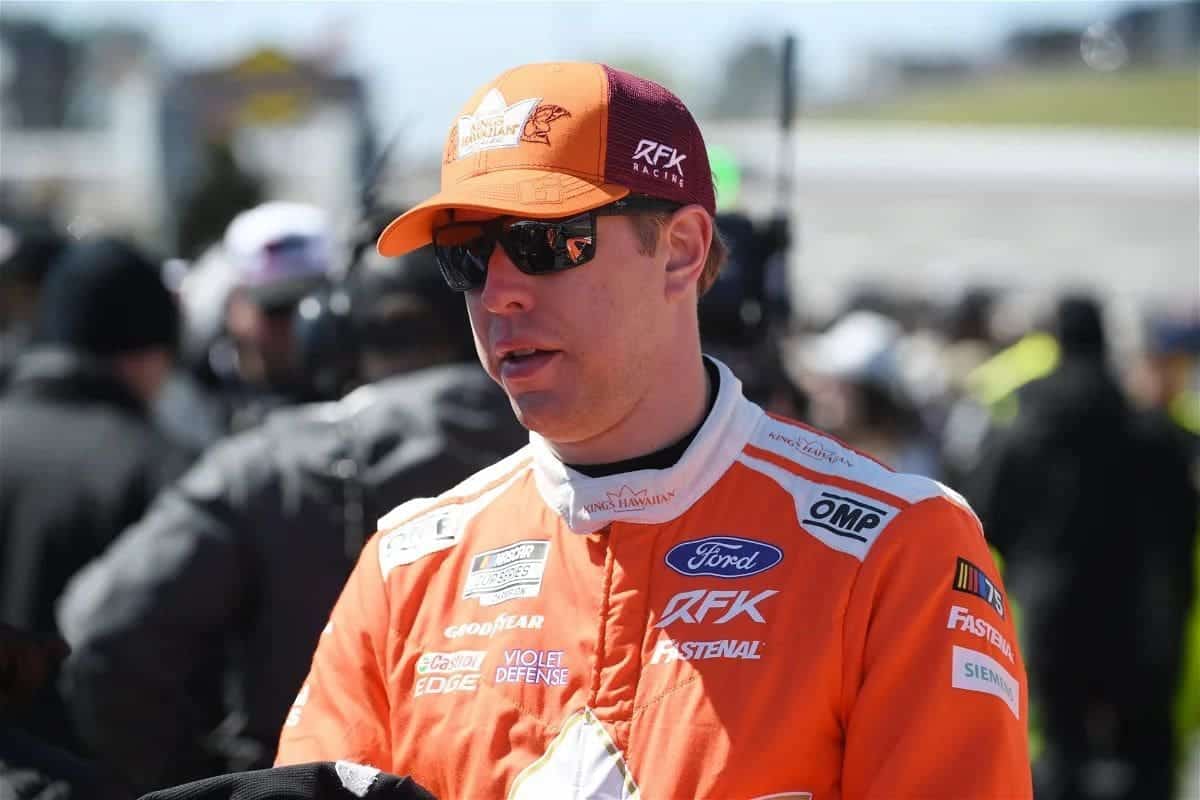Brad Keselowski’s Near-Perfect Performance: Brad Keselowski‘s recent performance at the Brickyard 400 serves as a compelling case study in the intricate interplay of strategy and execution in NASCAR. Overcoming a challenging starting position and a pit penalty, his adept fuel management and race adaptability left crew chief Freddie Kraft momentarily speechless, emphasizing the crucial nature of competitive racing. This episode highlights Keselowski’s tactical skill and raises questions about the evolving nature of race strategies in a sport increasingly defined by precision and unpredictability. What implications does this have for the future of NASCAR and its top competitors?
Key Highlights
- Keselowski executed an fuel strategy at Brickyard 400, demonstrating his tactical insights and adaptability.
- Freddie Kraft praised Keselowski’s leadership, highlighting the complexities of managing fuel efficiency throughout the race.
- Effective pit timing, including pitting ten laps earlier, showed Keselowski’s understanding of race dynamics.
- Despite facing a pit exit penalty, Keselowski’s execution of the fuel-saving strategy was impressive and nearly flawless.
Keselowski’s Fuel Strategy Gamble
Brad Keselowski’s ambitious fuel strategy gamble at the Brickyard 400 exemplified both the potential rewards and inherent risks of aggressive race planning in a highly competitive environment. Starting from the 26th position and facing a pit exit penalty, Keselowski was already at a disadvantage. However, his reputation as a savvy strategist—particularly in fuel conservation—prompted expectations that he could utilize his skills to navigate the race effectively.
The essence of Keselowski’s strategy lay in maximizing fuel efficiency to extend his stints on the track. This tactic, while historically successful for him and his RFK Racing team, required a delicate balance between speed and fuel conservation. The stakes were high; any miscalculation could lead to either a premature pit stop or, conversely, running out of fuel before the finish line. This race was a testing ground for such tactics, where every moment counted and every decision could pivot the outcome.
Despite his expertise, Keselowski’s plan ultimately fell short, raising questions about the limitations of fuel-saving strategies when faced with real-time race dynamics. The failure to secure a better mileage highlighted not only the unpredictability of racing but also the critical nature of situational awareness and adaptability.
Kraft’s Insights on Keselowski’s Performance
Kraft’s analysis of Keselowski’s performance at the Brickyard 400 highlights the complexities and unpredictability of fuel strategy in NASCAR, particularly as the driver faced unforeseen challenges that ultimately thwarted his ambitious plan. As Keselowski led the final laps, his calculated decision to push the limits of his fuel reserves was both audacious and fraught with risk. The gamble, which had the potential to secure a remarkable finish, instead became a cautionary tale of the delicate balance between ambition and practicality.
Kraft emphasized that while Keselowski’s leadership on the track was commendable. The plan to run the No. 6 Ford until the very edge of emptiness was predicated on precise calculations and an understanding of both the car’s performance and the race dynamics. However, as the laps dwindled, the reality of dwindling fuel became evident.
Moreover, Kraft acknowledged that such moments are what make NASCAR riveting. The ability to adapt in real-time is as vital as the initial strategy, and the strain to deliver results can lead to split-second decisions with far-reaching implications.
While Keselowski’s strategy fell short, it served as a powerful reminder of the risks inherent in chasing victory at the highest level of motorsport, summarizing the thrilling yet precarious nature of competitive racing.
Discussion on the Door Bumper Clear Podcast
The recent episode of the Door Bumper Clear podcast provided a compelling examination of the fuel-saving tactics that proved essential for Keselowski during the Brickyard 400, highlighting the intricacies involved in managing resources on one of NASCAR’s most challenging tracks.
Freddie Kraft, spotter for Bubba Wallace, articulated the challenges faced by drivers while maneuvering the delicate balance between speed and fuel efficiency. Kraft noted that while many teams aimed to conserve fuel, Keselowski’s strategy stood out due to its precision and execution.
“I don’t know where you were at fuel-wise, but we ran out basically as soon as we took the checkered flag yesterday. And he pit 10 laps before us, and we were all saving.”
“Brad’s always been one of the best at fuel-saving and getting the most out of it. It wasn’t really a surprise but like we were talking about some of the guys up there, that were out of the race, they were just scanning the six radio and they were like, ‘man I think they’re going to go for it.’” – brad
The discussion revealed several critical points regarding this approach:
- Timing of Pits: Keselowski’s decision to pit ten laps earlier than competitors allowed him to optimize his fuel efficiency while maintaining competitive speed.
- Resource Management: The ability to effectively gauge fuel consumption throughout the race enabled Keselowski to extend his stint, showcasing a masterful understanding of his vehicle’s capabilities.
- Strategic Insight: The 23XI Racing team’s struggle, which culminated in running out of fuel just after the checkered flag, highlighted the risks involved in fuel-saving strategies and the thin margin for error in high-stakes racing.
Execution and Disruption of the Strategy
Execution of the fuel-saving strategy unfolded with impressive precision, yet unforeseen disruptions ultimately challenged Keselowski’s ambitions to maintain his lead in the race. His crew’s calculated approach mirrored the successful tactics employed by Joey Logano at the Nashville Superspeedway, where meticulous fuel management proved essential. As Keselowski navigated from the rear to the front of the pack, the tension mounted, emphasizing the stakes involved in effective fuel conservation.
However, the delicate balance of strategy in NASCAR is often susceptible to variables outside a team’s control. In Keselowski’s case, the anticipated performance was disrupted by circumstances that exceeded even the most rigorous calculations. Factors such as unexpected cautions or shifts in track conditions can dramatically alter the efficacy of a fuel-saving plan.
As the race progressed, it became evident that while the strategy was sound, its successful application hinged on maintaining an uninterrupted flow of performance. This delicate interplay of execution and disruption not only highlights the complexities of NASCAR racing but also serves as a poignant reminder of the thin line between victory and defeat.
Keselowski’s near-perfect execution was ultimately an indication of the skill and foresight of his team, even as external disruptions thwarted their ambitions.
Keselowski’s History and Future in NASCAR
Brad Keselowski’s expedition in NASCAR is marked by a series of tactical victories and challenges that have solidified his reputation as a formidable competitor on the track. His career showcases a blend of tactical skill and tenacity, particularly in high-stakes situations where fuel management becomes vital. As he navigates the complexities of modern racing, Keselowski has consistently exhibited an ability to adapt and excel.
Key elements of Keselowski’s odyssey include:
- Championship Legacy: His 2012 NASCAR Cup Series championship stands as a reflection of his skillful navigation of race strategies, including fuel management.
- Memorable Victories: Wins such as the 2018 Brickyard 400 highlight his capacity to capitalize on opportunities and outsmart competitors in significant moments.
- Tactical Insight: Keselowski’s notable ability to assess fuel levels and make calculated decisions emphasizes his analytical approach to racing.
Despite setbacks, such as the recent disappointment at the Brickyard 400, Keselowski’s history reveals a driver who learns from adversity. His knack for fuel strategy has not only earned him victories but also respect from peers, establishing him as a key player in the NASCAR landscape.
As he continues to refine his approach, it is evident that Keselowski is poised to remain a competitive force. The evolution of race dynamics will certainly test his strategies, yet his experience suggests that he will rise to meet these challenges with resilience and ingenuity.
News in Brief: Brad Keselowski’s Near-Perfect Performance
Brad Keselowski’s remarkable performance at the Brickyard 400 emphasizes the critical role of tactical adaptability in NASCAR. By expertly balancing speed and fuel conservation, Keselowski navigated obstacles with precision, showcasing a profound understanding of race dynamics.
Crew chief Freddie Kraft’s astonishment highlights the complexities inherent in executing a successful race approach. This event not only solidified Keselowski’s reputation as a formidable competitor but also serves as a demonstration to the evolving nature of racing tactics in the sport.
ALSO READ: Haas Factory Team Partners With Brad Keselowski Following Cole Custer Addition





